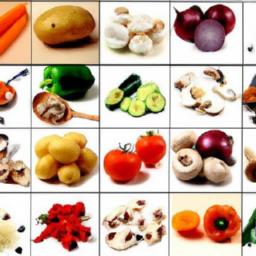Essential Ingredients Every Kitchen Should Stock
When we talk about essentials in the kitchen, we’re not referring to office supplies like staplers, but rather to fundamental ingredients that form the backbone of most recipes. These essentials often include a variety of herbs, spices, and condiments that serve as the foundation for creating delicious dishes.
Why Keeping These Essentials Close Matters
Having these core ingredients within arm’s reach is crucial since they frequently appear in cooking, regardless of cuisine type. Whether you’re preparing a simple salad or an elaborate entrée, one or more of these staples will likely play a vital role in elevating your meal.
Decoding Common Culinary Terms
Seasonings: Subtle Enhancers of Taste
Seasonings are ingredients added primarily to amplify the inherent flavors in food without drastically changing its profile. Salt is the most prevalent seasoning and remains indispensable in kitchens worldwide.
Flavorings: Ingredients That Transform
Flavorings go a step further by introducing distinctive tastes, fundamentally modifying the natural flavor of a dish. These encompass a wide range of items such as fresh herbs, spices, vinegars, and various condiments. It’s common for the terms seasoning and flavoring to overlap in everyday usage.
Herbs: Fresh or Dried Fragrant Leaves
Herbs refer to a substantial group of aromatic plants whose leaves, stems, or flowers are harnessed to infuse dishes with flavor. These can be incorporated either fresh or dried, adding brightness and complexity to meals. For example, parsley or dill are widely used fresh herbs in modern culinary practice.
Aromatics: Building Blocks of Fragrance and Flavor
Aromatics are ingredients chosen to boost the natural scent of a dish and typically include many herbs, spices, and certain vegetables like onions, garlic, and ginger. Their role is critical in layering flavors and enchanting the senses.
Spices: Dried Parts of Plants with Potent Flavor
Spices originate from various parts of plants-such as seeds, bark, roots, or berries-and are usually utilized in their dried form, either whole or ground. Classic examples include cinnamon sticks and black peppercorns, which infuse dishes with robust and sometimes warming notes.
Condiments: Prepared Additions for Flavor Enhancement
Condiments originally described any addition used to enhance taste, like herbs, spices, or vinegars. Today, this category also includes ready-made flavor boosters such as mustard, chutneys, hot sauces, pickles, and relishes, which instantly uplift the complexity of meals.
The Ever-Evolving Repertoire of Kitchen Essentials
This overview touches on only the foundational concepts behind kitchen staples, but the variety and applications are vast. With globalization and culinary innovation, new spices and condiments continue to enter kitchens worldwide.
For instance, turmeric consumption has increased by over 20% globally in recent years due to its health benefits and vibrant color, making it a must-have for many home cooks. Meanwhile, emerging condiments like harissa and tamarind paste are steadily gaining popularity in mainstream cooking.
Understanding these components and maintaining a well-stocked pantry ensures not only convenience but also enriches your cooking experience-opening doors to endless flavor possibilities. Detailed discussions about each type of ingredient and their specific culinary roles can be found throughout our website.








